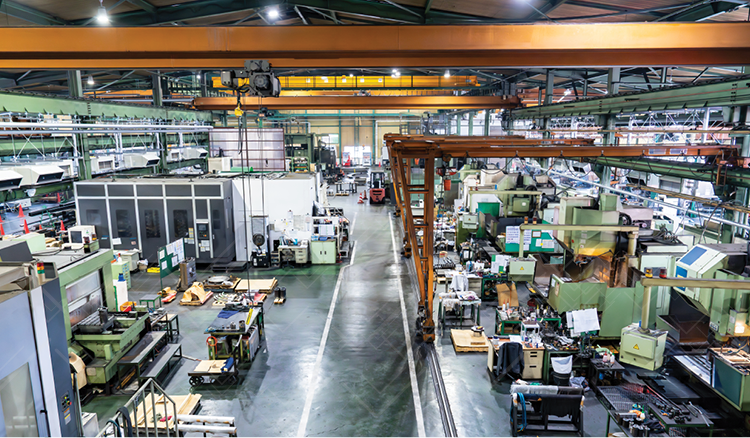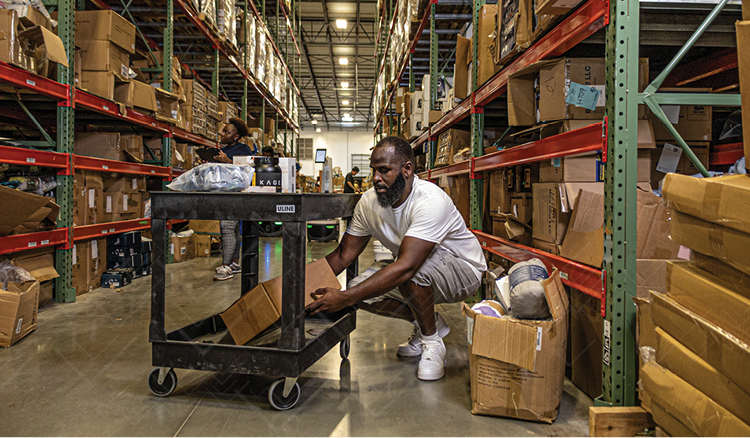POV: Insights From a Former Operations Leader in Warehousing & Distribution
My name is Michael Kavaky, I’m Veryable's Vice President of Operations for Michigan, Wisconsin, and Minnesota and have spent nearly 20 years of my career in warehousing and distribution, having worked in numerous industries such as Consumer packaged goods (CPG), chemicals, food and beverage, small parcels, and furniture. I’ve experienced the challenges that warehousing and distribution leaders face at all levels, from managing the floor directly all the way up to managing multiple facilities across oceans and borders. At the shop floor level, frontline leaders are focused on driving short term objectives like finishing dock schedules, improving OTIF (On-Time In-Full), and avoiding overtime. At the regional level, leaders are focusing on long term perfect service, contractual agreements, logistics as a percent of sales, and cost reductions. No matter what the org level or the goal, it all comes down to operational execution and KPIs.
Challenges Facing DC Leaders: Competing Priorities, Fixed Resources, Limited Visibility
A major common challenge that logistics leaders face is how to overcome the unpredictable nature of consumerism and the increasingly short shipping windows. In a customer driven distribution environment, forecasting order volumes can be highly volatile and shift quickly along with the economic environment and consumer tastes. A summer holiday, seasonal period, or special pricing can quickly send a rather strong warehouse into chaos. This leaves a manager who must balance; inbound trucks and containers, put away, inventory, quality, replenishment, order picking, loading, e-comm, customer specific labeling, and reverse logistics, fighting daily to stay just on time.
Little imbalances in the operation can have a large effect on the business but also the end customer. Falling behind in unloading can impact shipping lead times. Falling behind in inventory can cause a lot of down time searching for a product you thought you had and probably short shipping a customer as a result. Pallets of returned products are unrealized inventory capital. The tradeoff list goes on forever. The real challenge is how can you keep these different departments moving in lock step to avoid sacrificing quality for on-time service, accuracy for speed, and so on.
Examples From The Real World
The Dilemma: One Savannah GA Summer, when warehouse work in the heat and humidity is difficult enough, our facility was being absolutely crushed by containers leaving the port. Due to union strikes in LA, an uncommon amount of containers were being routed through the Port of Savannah to avoid delays. Container releases far exceeded allocated resources for unloading. We would typically unload 10-12 containers daily, have them put away within 24 hours without needing to interrupt other areas. However, with 30 containers arriving at the yard daily, we found ourselves critically behind and at risk of spending thousands in demurrage fees with no end on the horizon.
The Not Ideal Solution: We pulled labor from other areas which prevented us from getting ahead on the dock schedule and at times jeopardized on-time shipping in e-comm. We paid premiums to incentivize weekend work, and did the best we could to avoid containers late fees. With so many containers sitting in the yard, you’re faced with not only needing to unload FIFO to avoid demurrage fees, but now all that product in the yard is urgent for orders. This is the imbalance I was referring to. Slow unloading has now starved other work areas, thrown off the inventory allocation process in the network, perhaps delayed outbound orders, and maybe even caused double shipping to get the left-over product out on a different date.
The Operational Impact: As a result, the distribution center is faced with spending $100,000+ a month in container fees, overtime, and expedited freight. You may plan for some of these activities in hopes of not using the funds during budgeting, but $100,000 a month is enough money to noticeably impact logistics as a percent of sales figures. Not to mention having late orders and disappointing the customer. Once the wheels start to wobble, keeping things on track is hard to do. These operational challenges are solvable though and it doesn’t take level loading production, throttling back containers to match your headcount or even sinking money into more overhead to accommodate the uncertainty. Rather, using a tool specifically designed for operational decision makers that allows quick adjustments without significant capital investments or long periods of planning. Take a minute to hear exactly how LSO improved productivity by 38%, or how CDS improved reduced dwell time by 36%.
Veryable's Solution to Distribution Uncertainty
By adopting a degree of short notice flexibility (compared to the traditional fixed hours planned to imperfect volume forecasts) you can more quickly react to changing conditions without service interruptions.
In as little as 24 hours, you can bolster the unload team to ensure trucks and containers are being unloaded at exactly the right time. Matching the unload schedule with the exact number of unloaders needed to be successful, avoiding costly fees and further supply delays. Taking advantage of daily variation and only needing a short lookahead, distribution centers will minimize costs while driving higher service levels. With an unconstrained distribution center, you can support put away functions, improve warehouse space with increased consolidation, keep your inventory counts on time, and continue to flow product uninterrupted through the warehouse. The Veryable tool is designed to maximize productivity and efficiency, enabling growth and profitability, while at the same, pulling out waste and costs from the operation.
With the growth of e-commerce and import goods to the US, the need for distribution centers will continue to increase. ResearchAndMarkets.com predicts that the value of the warehouse market will grow to $86.41 Billion by 2024, up from $71.9 Billion in 2020. As customers continue to demand faster delivery, DCs are forced to have more inventory on hand than ever have before. “Just in time” inventory strategies no longer cut it. DCs will pivot to “just in case” inventory strategies that will help reduce or prevent future supply chain disruptions. These trends will require more from distribution centers, where adaptability and scalability are imperative.
Conclusion
No longer do decision makers have to be at the mercy of the unknown. The Veryable solution is designed to help operations leaders thrive in all aspects of their operation, transforming what can be a chaotic and turbulent environment by providing predictability and stability. At a tactical level for multi-site leaders, distribution centers need to evolve to survive. Embracing innovation while creating a more flexible fulfillment strategy is going to help you address labor constraints, supply chain disruptions, and capitalize on the rapid e-commerce growth you’ll likely see for years to come.
Learn More:
Previous Posts
Why Exhausting Your Recruiting Channels Is Not the Same as Exhausting the Labor Market
The Future of Manufacturing and Logistics
Create a free business profile today to explore our platform.






